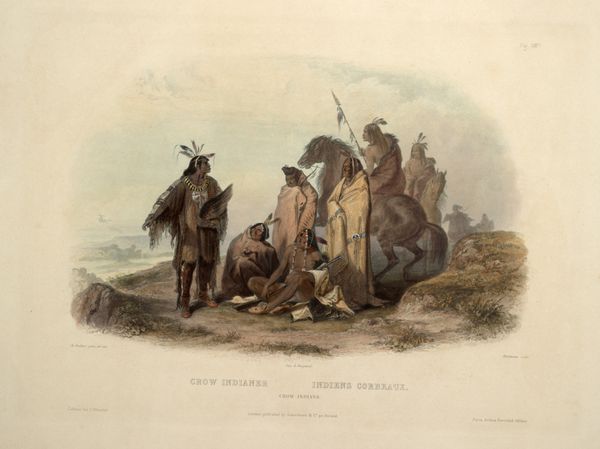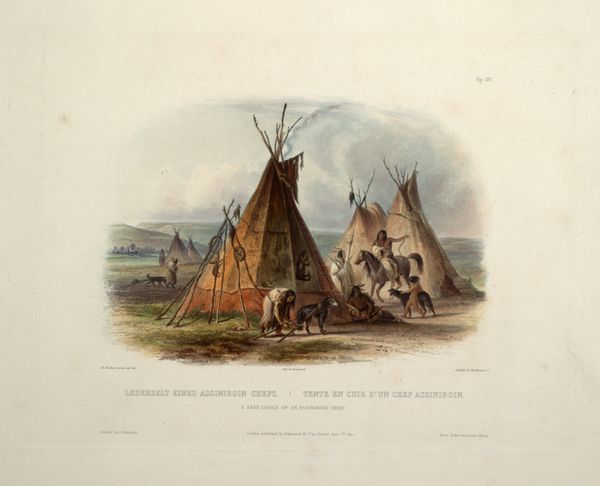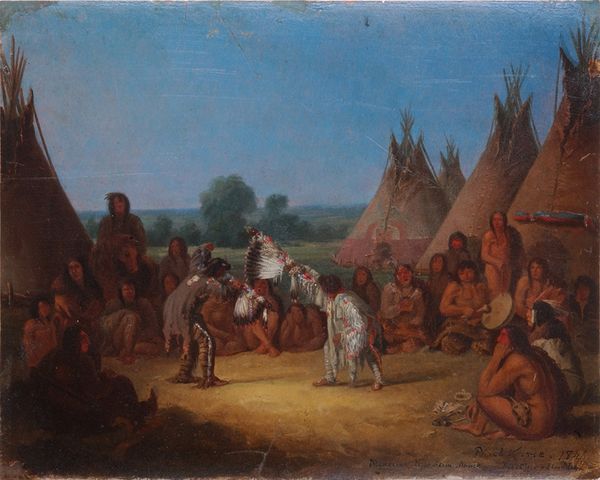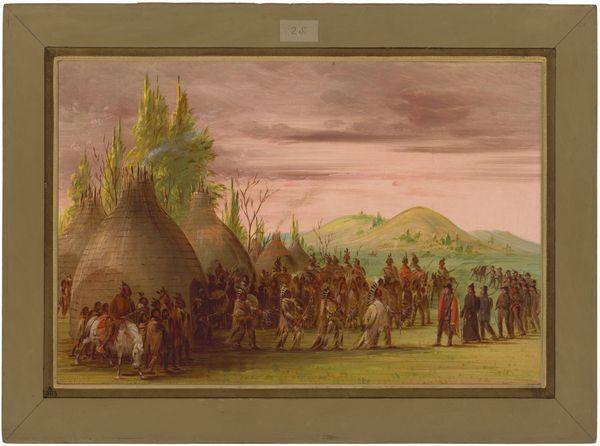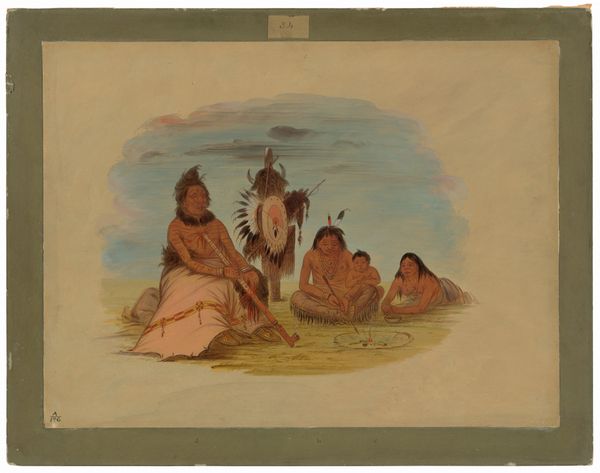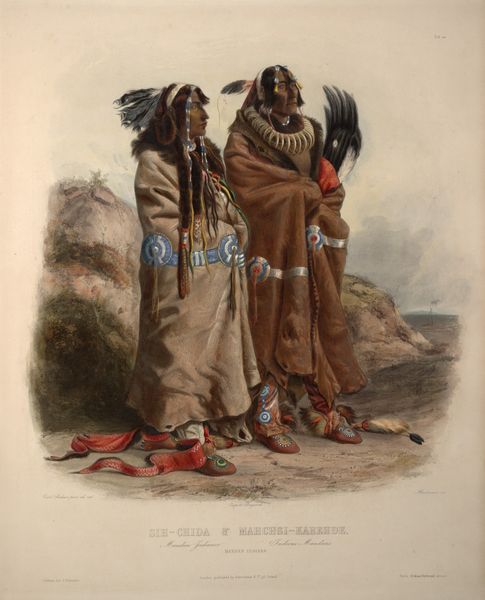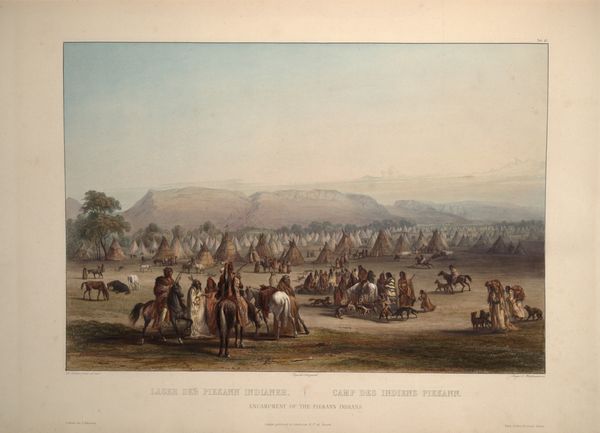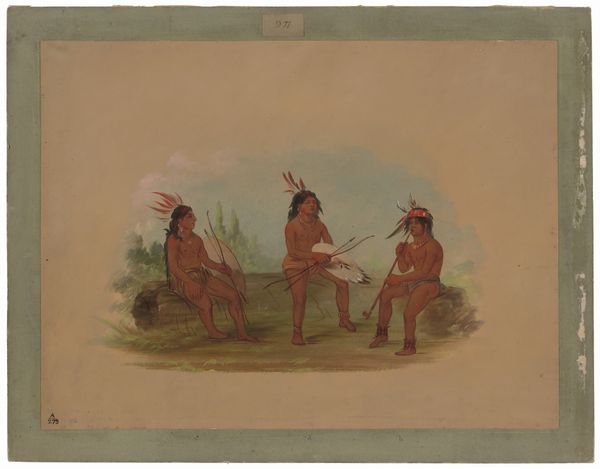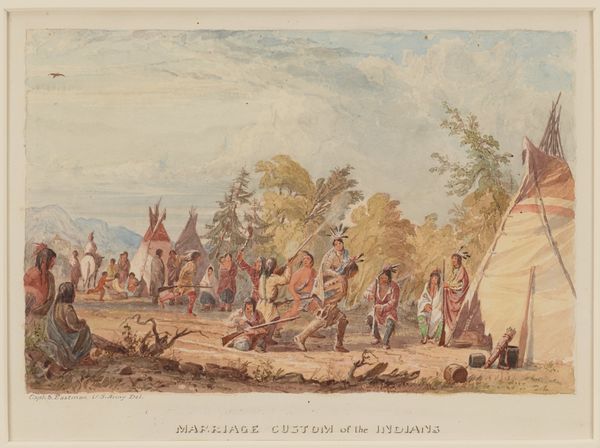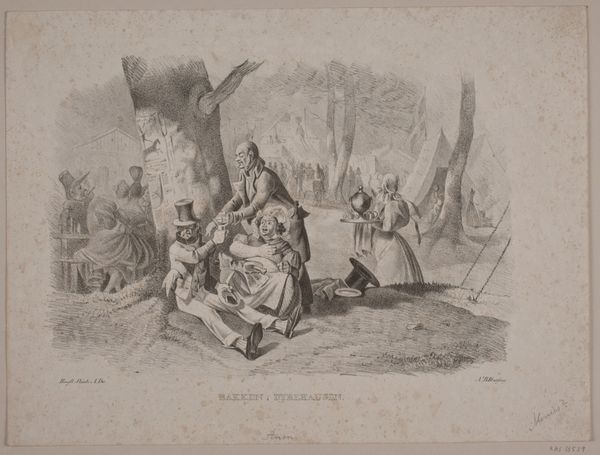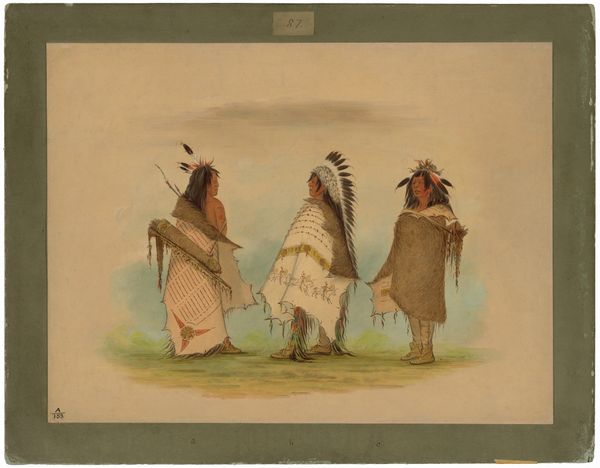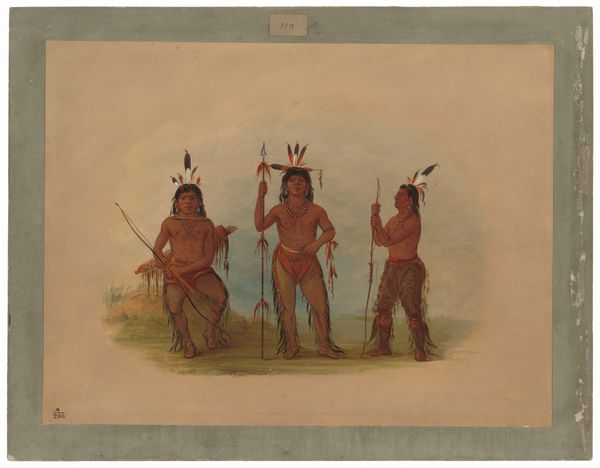
Funeral Scaffold of a Sioux Chief near Fort Pierre, plate 11 from Volume 2 of 'Travels in the Interior of North America' 1844
0:00
0:00
karlbodmer
Private Collection
#
water colours
# print
#
landscape
#
watercolor
#
indigenous-americas
Copyright: Public domain
Curator: This watercolor by Karl Bodmer, dating to 1844, is titled 'Funeral Scaffold of a Sioux Chief near Fort Pierre'. What are your initial thoughts? Editor: It evokes a stark kind of beauty, I think. A sense of open space, punctuated by the presence of these teepees and the scaffold itself. It makes you think of endings, but also a kind of enduring presence of life amidst grief. Curator: Indeed. Bodmer was meticulous in documenting the materials used in the Sioux culture; look at the detail in the hide work on the teepees, the careful rendering of clothing, even the tools. This precision challenges any romanticized notions, giving us a grounded sense of their existence. He was, in effect, documenting labor, lifeways, and cultural practices. Editor: I can see that. There's something in the scene's stillness, a quiet observation. You can almost hear the whispering of the wind and feel the dust underfoot. And the raising of the scaffold… that gesture of elevation, setting the body towards the sky. It's both practical and incredibly poignant. Did Bodmer actually witness this? Curator: Absolutely. He and Prince Maximilian spent considerable time among various tribes. His art became deeply entwined with what he witnessed firsthand. You see this reflected in his portrayal. These were not fabricated scenes, but moments meticulously recorded. Note also the way he positions the human figures, some are gesturing, some are seated, but all very realistically. It shows respect and highlights that he wasn’t just casually making something up for commercial gain. Editor: I hadn’t thought of the risk involved at the time. This journey to produce an art piece represents access but, also, intervention. He’s transforming a people and place, turning this sacred scaffold and community into an object of consumption for others back in Europe. He's shaping perception, whether intentionally or not. Curator: Precisely. These images then played a vital role in shaping the European perception of the American West and the indigenous populations, contributing to—or sometimes challenging—prevailing narratives. The very act of watercolor painting here—with the availability of these materials—reflects its own complex social-political narrative about who has access to produce work like this and how its viewing will later come to define the people documented within. Editor: What a thing. Even the act of observing shapes what's observed and, even now, we continue observing it. Thanks, that made me see so much more. Curator: You're welcome. The past is ever present in art, always something new to uncover.
Comments
No comments
Be the first to comment and join the conversation on the ultimate creative platform.
